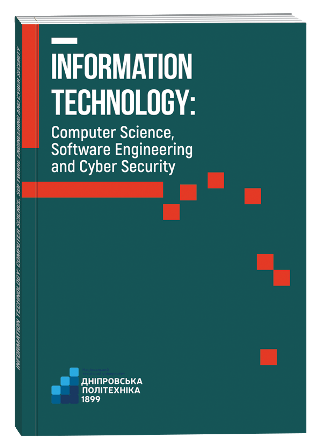ANALYSIS OF EXISTING METHODS OF FORECASTING DEMAND AND METHODS OF ASSESSING THEIR QUALITY
DOI:
https://doi.org/10.32782/IT/2023-3-9Keywords:
forecasting methods; extrapolation; regression; machine learning; forecast quality; forecast error.Abstract
This text explored various demand forecasting methods, including heuristic, extrapolation, regression, and machine learning methods. Heuristic methods are based on subjective assessments of experts and can be used for long- and medium-term forecasting, as well as in conditions of instability. However, they have their drawbacks, such as subjectivity and the possibility of biasing the forecast. Mathematical methods of extrapolation and regression are based on statistical trends and allow predicting future values based on past data. They have a simple implementation and a clear interpretation of the results, but are also limited by the unreliability of the data and the inability to predict unstable conditions in the future. Machine learning represents an alternative approach to forecasting using large amounts of data. It includes supervised learning, unsupervised learning and deep learning algorithms, each of which has its own characteristics and is used for different types of tasks. It is emphasized that regression models and machine learning methods have their advantages, such as the ability to take into account many variables and factors, but also have difficulty in implementing and interpreting forecast results. The text discusses the main methods of calculating the forecasting error and the scale for assessing the quality of forecasting depending on the value of the error. It is emphasized that the calculation of these indicators assumes a linear development of events, while non-linear events can affect the accuracy of the forecast. For example, disruptions in the work of a supplier or store can lead to an increase in the forecast error. Thus, it is necessary to take into account the non-linear nature of events when assessing the accuracy of the forecast Therefore, the choice of forecasting method depends on the specific situation and the availability of data. Each method has its advantages and limitations, and their use should be justified and carried out taking into account the specifics of a specific forecasting task.
References
Гаркуша Н.М., Цуканова О.В., Горошанська О.О. Моделі і методи прийняття рішень в аналізі та аудиті: навч. посібник. 2-ге вид., К.: Знання, 2012. C. 591.
Юрченко М.Є. Прогнозування та аналіз часових рядів. Методичні вказівки до практичних занять та самостійної роботи студентів спеціальності 051 «Економіка» освітня програма «Економічна кібернетика», «Економічна аналітика». Чернігів: ЧНТУ, 2018. C. 88.
Гече Ф.Е., Мулеса О.Ю., Гриненко В.В., Смоланка В.Ю. Знаходження найвпливовіших факторних ознак при побудові лінійних регресійних моделей. Technology Audit and Production Reserves, 3(2(47), 2019. P. 20–25. URL: https://doi.org/10.15587/2312-8372.2019.175020
Вітинський П.Б., Ткаченко Р.О. Нейроподібна структура для задач прогнозування в умовах коротких вибірок даних. Науковий вісник НЛТУ України, т. 29, No. 5, 2019. C. 147–150.
Макаренко М.В., Гудкова В.П., Аджавенко М.М., Приймук О.Р., Творонович В.І. Економічне прогнозування: навч. посібник. К.: ДЕТУТ, 2014. С. 161.
Mescon M.H., Albert M., Khedouri F. Management. Harpercollins College Div, 1988. P. 777.
Терещенко О.О. Фінансова діяльність суб’єктів господарювання: навч. посібник. К.: КНЕУ, 2003. C. 554.
Чубукова О.Ю., Рубан В.Я., Антошкіна Л.І. Економічна кібернетика: підручник. За заг. ред. д-ра екон. наук, проф. О.Ю. Чубукової. Донецьк: ЮгоВосток, 2014. C. 454.
Бутакова М.М. Економічне прогнозування: методи і прийоми практичних розрахунків: навчальний посібник. 2-е вид., випр. М.: КНОРУС, 2010. C. 168.
Smeekes S., Wijler E. Macroeconomic forecasting using penalized regression methods. International Journal of Forecasting, 34 (3), 2018. P. 408–430. URL: https://doi.org/10.1016/j.ijforecast.2018.01.001
Alvarez-Diaz M., Alvarez A. Forecasting exchange rates using local regression. Applied Economics Letters, 17 (5), 2010. P. 509–514. URL: https://doi.org/10.1080/13504850801987217
Кононова К.Ю. Машинне навчання: методи та моделі: підручник для бакалаврів, магістрів та докторів філософії спеціальності 051 «Економіка». Харків: ХНУ імені В. Н. Каразіна, 2020. C. 301.
Suthaharan S. Machine Learning Models and Algorithms for Big Data Classification: Thinking with Examples for Effective Learning. Springer, 2016. P. 556.
Кондіус І.С. Електронний посібник з дисципліни: Фінансове прогнозування. Луцький національний технічний університет, Луцьк, 2018. C. 160.







